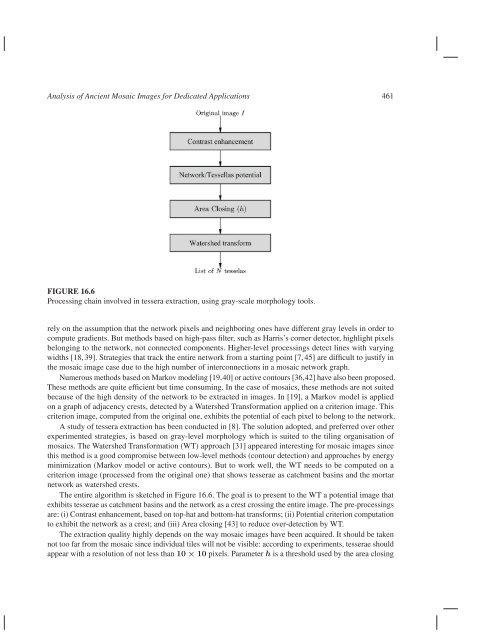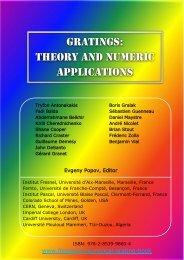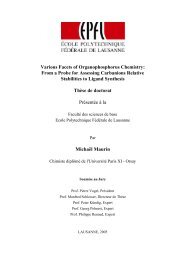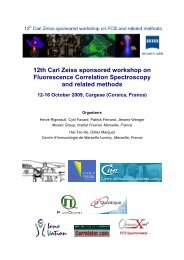Analysis of Ancient Mosaic Images for Dedicated ... - Institut Fresnel
Analysis of Ancient Mosaic Images for Dedicated ... - Institut Fresnel
Analysis of Ancient Mosaic Images for Dedicated ... - Institut Fresnel
Create successful ePaper yourself
Turn your PDF publications into a flip-book with our unique Google optimized e-Paper software.
<strong>Analysis</strong> <strong>of</strong> <strong>Ancient</strong> <strong>Mosaic</strong> <strong>Images</strong> <strong>for</strong> <strong>Dedicated</strong> Applications 461<br />
FIGURE 16.6<br />
Processing chain involved in tessera extraction, using gray-scale morphology tools.<br />
rely on the assumption that the network pixels and neighboring ones have different gray levels in order to<br />
compute gradients. But methods based on high-pass filter, such as Harris’s corner detector, highlight pixels<br />
belonging to the network, not connected components. Higher-level processings detect lines with varying<br />
widths [18, 39]. Strategies that track the entire network from a starting point [7, 45] are difficult to justify in<br />
the mosaic image case due to the high number <strong>of</strong> interconnections in a mosaic network graph.<br />
Numerous methods based on Markov modeling [19,40] or active contours [36,42] have also been proposed.<br />
These methods are quite efficient but time consuming. In the case <strong>of</strong> mosaics, these methods are not suited<br />
because <strong>of</strong> the high density <strong>of</strong> the network to be extracted in images. In [19], a Markov model is applied<br />
on a graph <strong>of</strong> adjacency crests, detected by a Watershed Trans<strong>for</strong>mation applied on a criterion image. This<br />
criterion image, computed from the original one, exhibits the potential <strong>of</strong> each pixel to belong to the network.<br />
A study <strong>of</strong> tessera extraction has been conducted in [8]. The solution adopted, and preferred over other<br />
experimented strategies, is based on gray-level morphology which is suited to the tiling organisation <strong>of</strong><br />
mosaics. The Watershed Trans<strong>for</strong>mation (WT) approach [31] appeared interesting <strong>for</strong> mosaic images since<br />
this method is a good compromise between low-level methods (contour detection) and approaches by energy<br />
minimization (Markov model or active contours). But to work well, the WT needs to be computed on a<br />
criterion image (processed from the original one) that shows tesserae as catchment basins and the mortar<br />
network as watershed crests.<br />
The entire algorithm is sketched in Figure 16.6. The goal is to present to the WT a potential image that<br />
exhibits tesserae as catchment basins and the network as a crest crossing the entire image. The pre-processings<br />
are: (i) Contrast enhancement, based on top-hat and bottom-hat trans<strong>for</strong>ms; (ii) Potential criterion computation<br />
to exhibit the network as a crest; and (iii) Area closing [43] to reduce over-detection by WT.<br />
The extraction quality highly depends on the way mosaic images have been acquired. It should be taken<br />
not too far from the mosaic since individual tiles will not be visible: according to experiments, tesserae should<br />
appear with a resolution <strong>of</strong> not less than 10 × 10 pixels. Parameter h is a threshold used by the area closing













